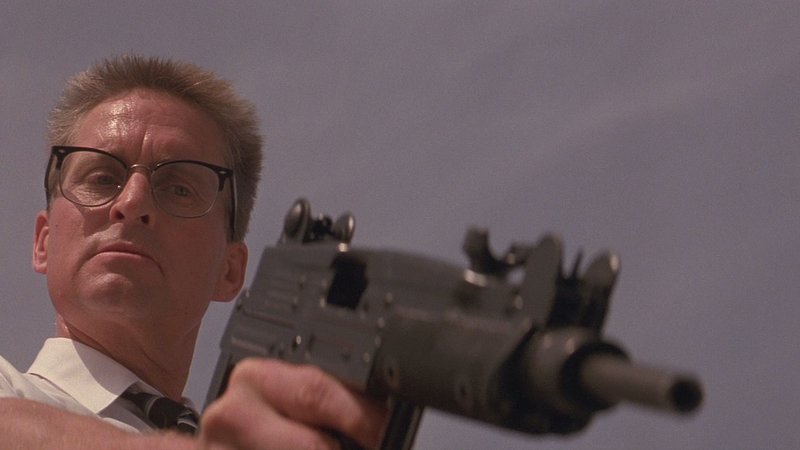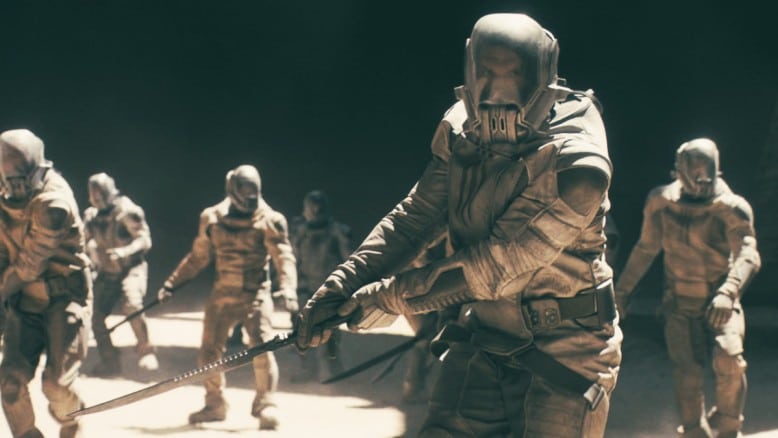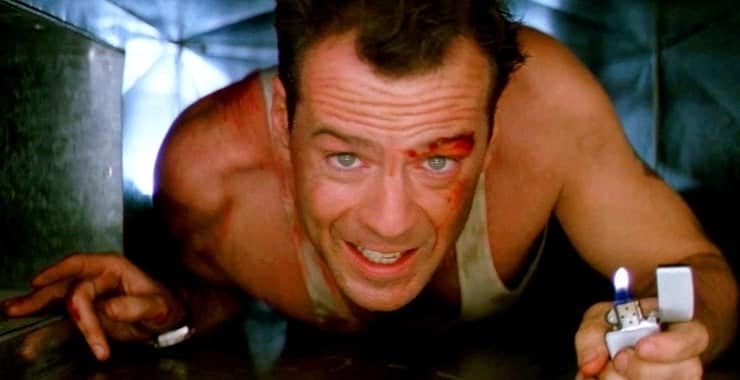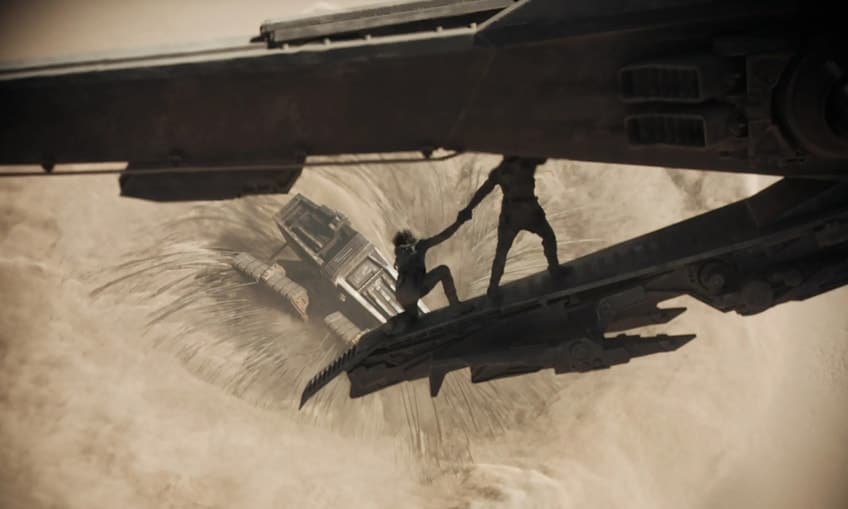So you’ve finished act one. You’ve got your beginning and you probably have some ideas about your ending, but how do you create your middle? What happens between the end of the first act and the beginning of the third? Well, appropriately enough, writing act two is next on the agenda.
Act two is the core of your story. The central, overarching plot and all your character arcs come into play. It’s for these reasons that writing act two is a dangerous part of the scriptwriting process. It’s easy to fall into the slump of a boring second act, no matter how action-packed or eventful you make it.
So how do you write an interesting second act? How do you make sure your audience stays captivated as well as keep the story going? In this article, via six key steps, we’ll look at how you can keep your story going and create an interesting, compelling centerpiece for your story.
Table of Contents
1. Introduction to Writing Act Two
Act two is ultimately where the big change in your story occurs. This act needs to keep your story moving towards the climax. However, it needs to do so naturally and without rushing to the conclusion.
Act two is generally much more freeform. It’s where you can really get into the weeds of your story, exploring its layers and contours. You aren’t introducing or resolving your story as you would be in the first and third acts. That said when writing your second act need a few things to happen:
- Your story needs to build to the climax.
- Your characters need to undergo significant character development.
- You need to create a series of obstacles for your characters to push the story forward.
- You need to develop your overall world.
These are essentially the building blocks of your second act. As long as you cover these elements you can be a bit freer with how you choose to develop your story. As always with screenwriting, by making sure you follow a basic structure you give yourself the freedom to explore without getting lost. The above essential elements are the starting map to act two’s vastness.

2. Developing Your Characters
The second act is essentially where you develop your character arcs. These arcs form the backbone of your characters and keep them from becoming stale and stagnant. But what is a character arc and how do you enact one?
- A character arc is how your character changes throughout the story.
- And your central characters must change throughout the story.
Those character flaws you’ve set up over your first act (refer to our previous article on writing act one) can really become a central part of your plot and character development in the second act. This is because it’s in the second act that these flaws become a barrier to whatever goal the character is seeking to reach. And in light of this, the character must overcome or embrace these flaws.
- The action of act two is what leads to the fundamental change in the protagonist, even if they don’t realize it yet.
- This is where the body of the story happens in that the protagonist has to learn something through whatever they experience.
These resolutions don’t need to be for the better. Arcs can be negative as much as they can be positive. What’s fundamental though is the element of change. You can have a coward who becomes a hero, a widow who learns to love again or a king who becomes a despot. In all those wildly different instances, change is at the heart of the narrative.
There are, of course, many ways to develop characters over the course of a narrative. Let’s take a look at an example…
Falling Down Example
In Falling Down, D-Fens, (played by Michael Douglas) begins as a somewhat sympathetic character to the audience.
- He’s stuck in a traffic jam, tired of the heat, the constant screaming of nearby kids and the buzzing of flies.
- He does what many of us wish we could do and just walks off.
- It’s a powerful character introduction and one that instantly makes D-fens relatable to the audience.
However, act two is where we really begin to see his character change. We see this change both internally and in how we as the audience perceive him.
Act two begins with D-fens being accosted by two gang members. They threaten and try to mug him. Despite his attempts to defuse the situation he eventually decides to fight them off with a baseball bat.
And as the story continues he seems to be a controversial yet somewhat relatable protagonist. D-fens becomes more and more unhinged. He repeatedly tells his ex-wife he’s “coming home”, to the point that she ends up calling the police. We start to realize then he isn’t a loving husband who just wants to go home to his family, instead he’s going home to his divorced wife and estranged child.
By the end of act two, he has killed several people. Some arguably deserved it. But some arguably didn’t. Overall though, D-fens is clearly unstable and we fear for his ex-wife and daughter going into the third act.

What Does This Mean For Your Second Act?
So D-fens’ character arc is not only something that changes him but is something that changes him from our perspective as an audience. We see D-fens as a relatable perhaps even likeable protagonist at the beginning. However, by the time we’ve reached that third act he is the opposite.
When writing your second act your character arc should be set in motion. That first scene of your second act right up to the end should be your character’s journey. This is true no matter what happens to them at the end. Whether it’s good or bad, they’ve got to change over the course of your story. And the second act is when the wheels of that change are set in motion.
How do external factors bear down on the protagonist and enforce change? And how does the protagonist‘s gradual change in turn affect the world around them? The second act explores these ideas and possibilities, even if the resolution won’t come till the third act.
3. Developing Your World
So you’ve set up your world in the first act. But act two is where you can blow open this set-up. This applies to a realistic world (say of a city, for example) as much as it does a fantasy world with dragons or spaceships. If it’s something that’s been established as already possible for the audience it’s fair game.
Your world is your established status quo as such. So act two needs to change it in some way. This means you can bring in the more unique or strange elements of your story without worrying about dropping them in too early.
This doesn’t translate as dropping an exposition dump halfway through your story. But if you have anything that was too outlandish for your first act or would have taken up too much time to properly introduce, you can use it when writing your second act. Essentially you are building upon that which may have been eluded to or made plausible in the first act.
Dune Example
In Dune‘s second act, we find ourselves transported to the planet of Arrakis. This is a desert world completely unlike protagonist Paul’s home world of Caladan. During this second act, the story becomes engrossed in a truly alien world, with water so scarce and heat so extreme that to survive outside requires a special bodysuit.
Furthermore, act two, for example, introduces the Sandworms of Arrakis. These gigantic monsters would have taken a chunk out of the first act to establish in their full capacity. This time is better used to establish the core elements of the story.
However, in the second act, these monsters are utilized as an obstacle for our protagonist.
- In giving us our first proper look at the worms this far into the story, Dune gives us a brilliant moment of tension and exposition without needing to specifically tell us much at all about the details. In short, the action – seeing this gigantic beast – does the talking.
Another example of Dune‘s second act giving us new and exciting elements of the story is the Sardaukar. While the rest of the factions in Dune were introduced in the first act, the Sardaukar arrive relatively late, but with good reason.
- Firstly, having a scene in which warriors are anointed with human blood would set a much darker and sinister tone for the rest of the film. One that even the Harkonnens might struggle to live up to.
- Secondly, we have seen the Sardaukar’s employers before, as they’re explained to be the Emperor’s personal army. We have seen several envoys from the Emperor and heard about his political schemes to bring down Paul’s family. The Sardaukar in this respect are a means to an end.
- So seeing them here is an exciting realisation of previously foreshadowed elements.

What Does This Mean For Your Second Act?
Essentially Dune utilizes the second act to introduce the more outlandish, impressive and strange elements of the film’s world. The Sardaukar and Sandworms will go on to be pivotal in the film’s third act. The Sardaukar are important in the invasion of Arrakis and the Sandworms are important in driving Paul and his mother to the Fremen in the third act.
By expanding on earlier elements set up in previous acts (namely the alien world and imperial envoys) Dune gives us what is possible. The Sardaukar and Sandworms are an extension of previously established concepts. This also means that the film’s third act can utilize them without needing to worry about losing the audience.
So if the first act introduces to the concepts, the second act fully demonstrates these concepts through action. It’s in the second act that we truly understand the scale and impact of the Sandworms, for example. This is perfect pacing in this regard because it doesn’t deploy these impressive creatures within the story too early. However, it also doesn’t leave it too late so that we have either forgotten about their existence or stopped caring.
4. Creating Obstacles
When writing act two you need your characters to change or make a change. But how do you do that? Creating obstacles for your characters is key in this as it gives them something to overcome. It also introduces further conflict, which is important for that build-up to your third act.
These obstacles can range as long as they hinder your protagonist in some way. Ultimately, the protagonist should never find it easy to reach their goal. So the obstacles are important as they force the character to prove themselves as worthy (or not) of achieving their goal.
These obstacles should escalate as the story progresses. While they shouldn’t overshadow the overarching conflict (that could result in your act two becoming hard to follow!), these obstacles carry your story from the end of act one to the beginning of act three.
Drive Example

In Drive‘s second act the protagonist (the Driver) has fallen for his neighbour, Irene. Soon Irene’s husband returns from prison. This gives us the central conflict of the movie: will the Driver and Irene be together? The first act has given us this end goal which is now in jeopardy, creating our central conflict within act two.
- When Irene’s husband, Standard, returns home, he is obviously somewhat suspicious of the Driver.
- But we also meet a man who just wants to do right by his family. We aren’t meant to hate Standard necessarily. In fact, when he and Benicio are then threatened by some thugs we fear for him and his family.
- This attack on Standard propels us to our next obstacle. Standard needs to rob a store to settle things with these thugs, something the Driver offers to help with.
- However, the robbery goes awry and Standard is killed. This leads us on to the Driver figuring out that the same people who ordered the robbery planned for Standard to die.
- This pits the Driver against the mobsters responsible. These same mobsters send hitmen after the Driver and we learn he’s much more violent than he seems. He brutally dispatches the hitmen and goes after the mob bosses in charge. He hunts one of the bosses down, drowning him in the sea.
What Does This Mean For Your Second Act?
This is a simplified summary of the second act of Drive. However, notice how the entire act revolves around that central conflict of Irene and the Driver’s romance. The Driver only acts to protect Irene and her family. By the third act it has put his life in danger and the same men who ordered the threat against Benicio are still at large.
We initially have our characters’ happy ending threatened by something that ends up being relatively small in the overall plot. But this threat leads to the overarching conflict. We want Irene and the Driver to succeed and because of this, the second act continues to threaten our happily ever after.
So when writing your second act, consider what the best outcome for your characters may be or what they might want. Threatening this and putting obstacles between the character and their goal creates tension and conflict within your story. This, overall, leads to a substantial second act.
5. The B Story
When writing your second act, a B story can be an important way to keep it fresh and engaging.
- The B story is essentially a secondary story within your second act that fits within your world.
This story underpins your plot in the second act. It can be used in several ways. For example, want to have two characters fall in love? Use the B story. Want to pull focus onto a specific character? Your B story can serve this function.
The B Story is also a great way to give development to supporting characters when writing your second act. Having a B story revolve around a supporting character can really help to develop them as a character within your overall narrative. This can be especially effective at creating an emotional impact in the third act.
The B story can essentially give your audience a break from the A story. This, in turn, gives you the chance to introduce new character arcs, develop your world further and create cliffhangers to keep audiences hooked.
B stories can be relatively disconnected from the A story of the film or can be interwoven with the overall plot. However, they will need to prove some relevance to the story’s conclusion in act three. The audience won’t forget this B plot, so not returning to it in some way will leave them confused as to its point.
Die Hard Example

In Die Hard John McClane must battle to save a group of hostages, (including his wife) from terrorists in a skyscraper. This seems like a simple enough plot. But surely watching a man crawl through air vents for two hours might get a little bit boring.
That’s where the film’s B story comes in. Specifically the story about McClane’s wife Holly. While the story is primarily about McClane trying to stop the terrorists, he is also there to save his wife. So the B story revolves around her and her trying to hide the relationship between her and McClane from the terrorists.
This B story does two things.
- It gives us a break from the action-packed escapades of the A story.
- But it also gives us rising stakes and tension as the terrorists slowly begin to catch on.
- So we not only get a change of pace from the gunfights and stunts but we also get a rising tension that sets up the third act perfectly.
During the third act, we aren’t scared for McClane. After all, it’s hard to fear for someone who’s blasted his way through dozens of heavily armed henchmen and survived falling out of a skyscraper. However, his wife gives us stakes. And it’s the second act B story that sets her up as a tool the villains can use against our protagonist.
What Does This Mean For Your Second Act?
Therein lies the true strength of a B story when writing your second act. Not only does it help raise the stakes naturally throughout the second act but it also has the added bonus of setting up the penultimate conflict in the third.
Your B story is a great way to raise the stakes for your climax and third act. Which again when writing your second act is exactly what you want to do.
The B story can range from being a romantic conflict to even an entire parallel plot within your narrative. But in all (or most) cases the B story should generally converge around the climax of the story.
6. Building To The Climax
So how does this all come together? In essence, your entire second act is building to a specific point in your story, the climax.
This, the end of the second act, is perhaps the key point in your story. It’s the point where the conflict reaches a fever pitch and your hero looks to have lost. This is the moment that your story builds towards and that which comes after reflects upon.
Look at almost any film that follows a three-act structure and you can find one of these climactic moments towards the end of the second act. Think back to the last film you watched. What happened at that last moment of act two? When did you fear for your characters the most?
Let’s look at an example…
Spider-Man: Into The Spider-Verse Example

In Spider-Man: Into The Spider-Verse Miles Morales must overcome his self-doubt to eventually save the world from Kingpin’s dimension-merging machine.
- So far in our second act Miles and the other heroes have had to track down the scientist behind Kingpin’s machine, who turns out to be another supervillain.
- To make matters worse the other Spider-people are slowly dying and the only way to save them is to send them home.
- Miles’ uncle has turned out to be a supervillain and the group has been attacked by Kingpin’s minions.
- This moment comes after the death of Miles’ uncle at the hands of Kingpin. And this is on top of the revelation that Peter Parker plans to sacrifice himself to save the city because he doesn’t believe Miles can.
These moments come as the culmination of both the second act revolving around acquiring a device to destroy Kingpin’s machine and Miles’ character arc. Miles is terrified of failure and mourning for his Uncle. The B story of his unreciprocated love with Gwen Stacey also has a no hope moment as she too has given up on Miles.
Miles’ arc concludes at this vital point of the script. A few words from his grief-stricken father gives him a moment of pause, to collect his thoughts. This leads him to find new faith in himself. Miles then swings off into the night to save the day.
What Does This Mean For Your Second Act?
Not only do we have the climax of the film built up through the obstacles the characters have overcome. But we also have the potential failure of Miles and Gwen’s relationship. On top of this we have Miles at his lowest point and the knowledge that even if the others succeed, Peter will die.
This gives us a moment of complete crisis. It’s undoubtedly something that we as an audience are invested in and want to see resolved. So when Miles dons his new Spiderman costume and swings off into the night we’re cheering him on and rooting for him to succeed. All of these elements come together at the end of act two, propelling us into the third act.
In Conclusion: Structuring Your Second Act
Writing your second act is all about developing your narrative. You are trying to raise the stakes to bring your story to the climactic moment at the end of the second act. But you are also fleshing out the world you set up in the first act.
The second act is where the primary journey of the film takes place. It’s not where the grounds for this change are established or where the conclusion is reached but, instead, where the change actually takes place via the story’s action.
The key beats to remember when approaching your second act are:
- Interrogate the character arc and change at the heart of the protagonist’s story.
- Develop and explore the story world.
- Create obstacles for your protagonist.
- Include a B story to support the A story.
- Build to your climactic moment – the perfect lubrication for your third act.
These are just a few things you should include in writing your second act to prevent it from becoming a disjointed wasteland in between your first and third acts. Get this right and you keep your audience hooked and perfectly poised to enjoy the story’s third act to its full potential.
– What did you think of this article? Share It, Like It, give it a rating, and let us know your thoughts in the comments box further down…
– Struggling with a script or book? Story analysis is what we do, all day, every day… check out our range of script coverage services for writers & filmmakers.
This article was written by Callum Scambler and edited by IS Staff.
Get *ALL* our FREE Resources
Tackle the trickiest areas of screenwriting with our exclusive eBooks. Get all our FREE resources when you join 60,000 filmmakers on our mailing list!

